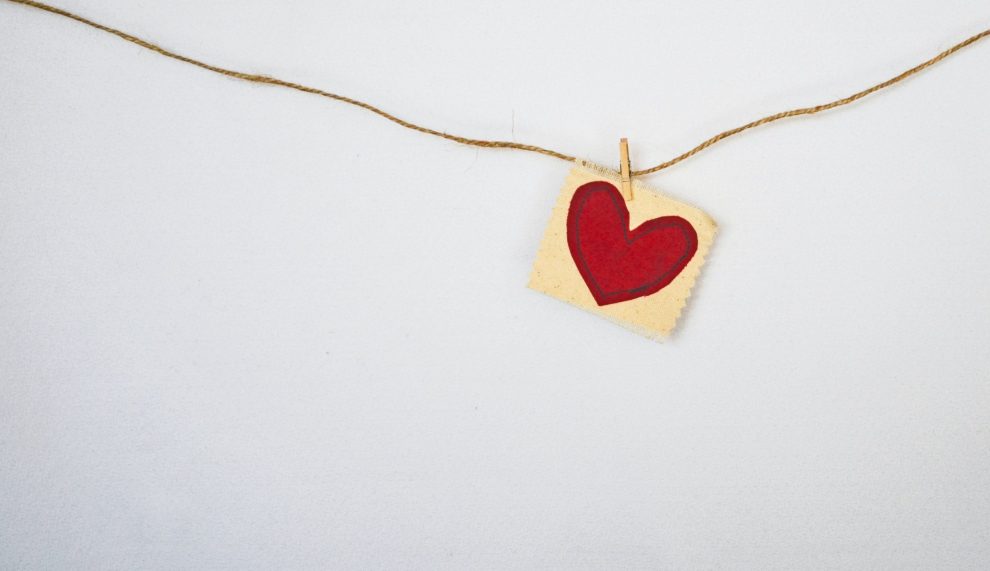In 2016 Marge had three types of cancer. Although the multiple surgeries, rounds of chemotherapy, and months spent sitting through the unknown are many people’s worst nightmare, Marge speaks of her experience with a certain lightness, humor, and even gratitude.
Surgery for one type of cancer led to the detection of another in its early stages—a lifesaving discovery. Marge was humbled and touched by the overflowing support of her community. Her friends, neighbors, and acquaintances offered prayers, meals, and rides to appointments. Marge became fond of the people she met at the chemo center. In short, Marge sees silver linings and embraces what life hands to her.
Yet Marge recalls one aspect of her journey with no lightness: the night following her second round of chemo. “It was the worst night of my life,” she says, adding with a wry smile, “And I’ve been through a lot of things.”
Marge describes the sensation as every cell in her body—from her bones to her muscles to her skin—screaming out in pain. She recalls the long, dark night spent doing the only thing she could do: praying.
“There was no place of comfort for me at all,” she says. “I could not read. I could not pick up the Bible. All I could do was cry out to God. Because the pain was so severe, it was difficult for me to form thoughts. It was just a gut screaming out to God.”
Marge says that even though prayer didn’t lessen her pain, it kept her out of the vicious cycle of asking, “Why me?” Prayer allowed her to let go of questions, fears, and the need to control. It helped her to feel nothing but utter dependence on God. She remembers thinking, “It’s all on you, God. Save me, don’t save me. It’s up to you.”
Marge isn’t alone in turning to prayer during times of struggle. A survey by the Pew Research Center found that 55 percent of Americans pray daily. A 2017 Barna survey found that 49 percent said that their prayers most often pertain to seeking personal guidance during a time of crisis. People are quick to pray—and expect results—regarding health issues. According to a Gallup survey on the impacts of faith, prayer, and divine intervention on healing, a striking 77 percent of respondents agree that “God sometimes intervenes to cure people who have a serious illness.” Likewise, 82 percent affirm the “healing power of personal prayer.”
Contrary to overwhelming popular opinion, scientific research doesn’t necessarily confirm that prayer heals. In 2006 the results of a long-anticipated and rigorous study involving more than 1,800 patients revealed that prayers offered by strangers had no effect on the recovery of individuals who underwent heart surgery. In fact, patients who knew they were being prayed for had a higher rate of postoperative complications.
Although the study met the highest standards of design and implementation, the authors quickly asserted that the findings are not the last word on the effects of intercessory prayer.
Perhaps this is because faith in the efficacy of prayer is more than the popular opinion of the masses. Survey data from 2004 indicate that 73 percent of medical doctors in the United States believe that miraculous healing occurs. Other studies do demonstrate the positive impacts of prayer on health and well-being.
For example, in the past several decades, practices such as mindfulness-based cognitive therapy, which combines the ideas of cognitive therapy with meditative practices, have shown promising results in treating major depression, helping obese teenagers lose weight, increasing multiple sclerosis patients’ quality of life, and decreasing mood disturbance and stress symptoms in cancer patients.
Centering prayer, a contemporary form of Christian meditation, has shown similarly positive impacts. After participating in a 10-week study that included weekly two-hour group sessions and individual practice of centering prayer twice daily, participants reported decreased stress and anxiety within the context of a deepening relationship with God. Considering that stress is identified as one of the top contributors to serious health problems in North America, this is no small feat.
Seeking proof
While scientific studies supporting or disproving claims of healing prayer are revealing, valuable, and necessary, sometimes it may be worth acknowledging the limits of scientific studies regardless of what they reveal. Religious studies scholar Candy Gunther Brown writes in her 2012 book, Testing Prayer (Harvard University Press), “Even if researchers employ a range of methodological perspectives and explanatory models, there are inherent limits to what scientific testing can prove.” Most likely, data that support the positive benefits of prayer and data that challenge prayer’s efficacy will always exist simultaneously.
Even if there weren’t limits to scientific inquiry, a person of faith has to wonder if we are meant to search for proof before living out our faith. I’m reminded of Jesus’ 40 days and 40 nights in the desert and his response to the devil, who tempts him to prove himself as the Son of God. Despite his hunger and exhaustion, Jesus answered unwaveringly: “Do not put the Lord your God to the test” (Matt. 4:7).
God’s ways are beyond our comprehension, and there’s no way to prove why or if God is acting in a particular way. Perhaps what’s more important to explore is how God has moved through the lives of those whose health and well-being have been positively impacted by prayer.
A place to go in times of struggle
While Marge’s dark night involved a visceral sort of communication with God, Marie relates a different kind of prayer that unfolded throughout her own health crisis.
“I would sit down and try to have conversations with God,” Marie says, describing the conversations as short dialogues during which she would send a message out to God and a thought she hadn’t expected would come back. “These insights felt very real,” Marie says, “because I hadn’t thought about them in advance. They just sort of came.”
The words that God spoke provided perspective and comfort during what was a very trying time in Marie’s life. She documented the conversations in a journal.
One day, God told her, “I will give you everything you need when you need it and when you can benefit from it.” On another, God spoke, “You are constantly changing, constantly evolving, constantly transforming. How you handle things today may not be the same way you handle things in the future. Keep hope alive. I will give you strength for the journey.”
Like it did for Marge, prayer did not serve as a channel for physical health outcomes, but it did significantly help Marie process her experience. Does she think prayer helped her heal? Marie says, “Psychologically, yes. Physically, I don’t know.”
Seeking God’s help during a health crisis isn’t the same as seeking a changed status of the crisis. Frank describes the sense of peace and acceptance that came from prayer the night before he underwent cardiac bypass surgery: “It isn’t so much you are saying to God, ‘Get me out of this,’ ” he says. “On one end you are [asking God to] give strength, wisdom, and competence to the nurses and doctors who are going to care for [you]. On the other end you are [saying], ‘Well, relationship with God got me to this point and one way or the other, whatever happens, I’m still going to have that relationship with God.’ That has in itself a kind of healing.”
The fundamental role of prayer
The people with whom I spoke understand that prayer is not a linear, transactional, or cause-and-effect interaction. Prayer impacted their experiences, but not necessarily in the way or with the timing they expected.
Lynn, who has been involved with a 12-step recovery program for more than a dozen years, describes the unexpectedly circular nature of prayer on her physical, emotional, spiritual, and mental health. When Lynn began the program, she had an admittedly inactive spiritual life. But because believing in something greater than yourself is a key principle of 12-step programs, and the practice for people in her program is to spend a half-hour in quiet time each day, recovery for Lynn meant developing a daily prayer practice.
At first, this didn’t come easily—and in fact it still doesn’t. “It’s really hard to sit for half an hour and quiet the mind,” Lynn says with a laugh. Yet she still does it first thing each morning, as she has every day for 12 years. She doesn’t journal or read the Bible. She just sits and listens for God.
All that listening has reaped results. “It gives me a calm foundation for my day,” Lynn says. “I see [the impact] in my life. When things at work don’t go well, I take time. I breathe. I pause. . . . [It] has made me a more accepting person as well. I may initially get upset about things, but I come to an acceptance more easily.”
Prayer has also played a fundamental role in her recovery from addiction.
“Prayer is the foundation of recovery,” Lynn says. “It’s not just staying away from our drug. It’s about finding a relationship with something bigger than it. We have a God-shaped hole, and we’re going to try to fill it with anything else, but prayer and your relationship with your holy power are the only things that are really going to fill that hole.”
Lynn, who attends several recovery meetings a week, has seen enough to know that prayer plays an essential role in recovery. “Other than staying away from the drug, prayer is the key component,” she says. “When people stop with the prayer, it’s a slippery slope. It’s typically not long before they are back in their disease.”
For Lynn, prayer plays a direct role in her healing from addiction and benefits her mental and emotional health overall. It hasn’t eliminated her struggles with the wave of a magic wand, but it equips her to rise above her addiction, with the help of God, one day at a time.
The unexpected impacts of prayer
Around the time she received her cancer diagnoses, Marge was also diagnosed with diabetes. She knew that once she finished with the ordeal of surgery and chemo, she needed to exercise and lose weight to address the diabetes. The problem was that fitness has never been Marge’s favorite pastime.
With that in mind, she developed a plan. “I hate exercise, but I love praising God,” Marge says. She created a playlist full of enthusiastic praise songs and committed to “walking, dancing, or prancing” through the playlist daily. With her new practice, Marge racked up 7,000 steps in one sitting—er, dancing—lost weight, and dropped her A1C levels. Within nine months, Marge was no longer diabetic. Praying through music and movement quite literally changed Marge’s health, as it transformed praise into exercise.
Prayer is wrapped up with community
Prayer doesn’t just change an individual; it also changes relationships.
Every person with whom I spoke noted the positive impact that knowing others were praying for them had on their well-being. They don’t necessarily believe that distant prayer changed their health circumstances, but they felt buoyed emotionally, mentally, and spiritually.
Marge is from a small town where word spreads quickly. Because she’s a private person, the initial thought that “everyone on the street knows” was startling. But then she remembered that everyone knowing meant that everyone was praying.
“There was just a constant feeling of being nourished, comforted, and rocked,” Marge says. “The interweaving of prayer, like a hammock, held me up. My soul was rocked in the love and prayer of people I knew well and people I did not know well, children and old people, people I played bridge with, people I went to church with.”
This thought was a tremendous source of comfort and strength.
Frank also describes the depth to which the prayers of his community touched him. As a pastor, Frank knows his community in a uniquely intimate way, having witnessed their sorrows and joys and shared in some of their most profound moments—births and deaths, marriages and divorces, illnesses and recoveries. So when the tables were turned and his community rallied to support him during his health crisis, Frank was deeply moved. He spoke of how the mail he received moved him, how he felt a sort of spiritual energy coming from it. “Knowing [the faith that] was behind those cards was very healing,” he says. Frank saved bags of cards and revisited them throughout his recovery, soaking in their healing energy.
After months of healing from major surgery, Frank recalls returning to the pulpit and thinking, as he looked out at his congregation, “My God, these people bodysurfed me through that challenge.”
The impacts of prayer on healing
No one whom I interviewed stated or implied that prayer healed them, but everyone spoke in one way or another of the healing impact that prayer mysteriously played in their lives. There was a lack of certainty in the specifics of how it happened, and yet a deep faith that it did.
“I don’t have a road map for how prayer healed me,” Frank says, “but what keeps coming back to me all the time is that prayer led me to a kind of calmness and trust that the Lord would be with me no matter what happened.”
For Frank, prayer led to calmness. For Marge, it enabled acceptance. For Marie, it brought insight. For Lynn, it carries strength. Prayer doesn’t magically fix problems, but it changes the people who pray for the better, providing comfort and peace, leading to personal transformation, and deepening the bonds of community.
Marie notes that prayer is not always answered immediately or the way you want it to be. “People often talk about how ‘God has abandoned me,’ or that sort of thing,” Marie says. “But in my experience, I instead found myself asking, ‘Am I going to abandon God?’ I realized that I was not, even if I did not hear back from God what I wanted to hear. I almost felt in many ways that I was being tested and realized that I would not abandon God regardless of what happened.”
Maybe that’s the question we all face when we consider prayer and healing. Does our faith and commitment to God depend on the data that a study reveals or on the prognosis we receive? Will we abandon God when an analysis of prayer and healing doesn’t deliver concretely positive results or when our own experiences of prayer and healing are ambiguous? I suspect that for most readers of U.S. Catholic, the answer is no.
This article also appears in the May 2020 issue of U.S. Catholic (Vol. 85, No. 5, pages (30-34). Click here to subscribe to the magazine.
Image: Debby Hudson on Unsplash













Add comment